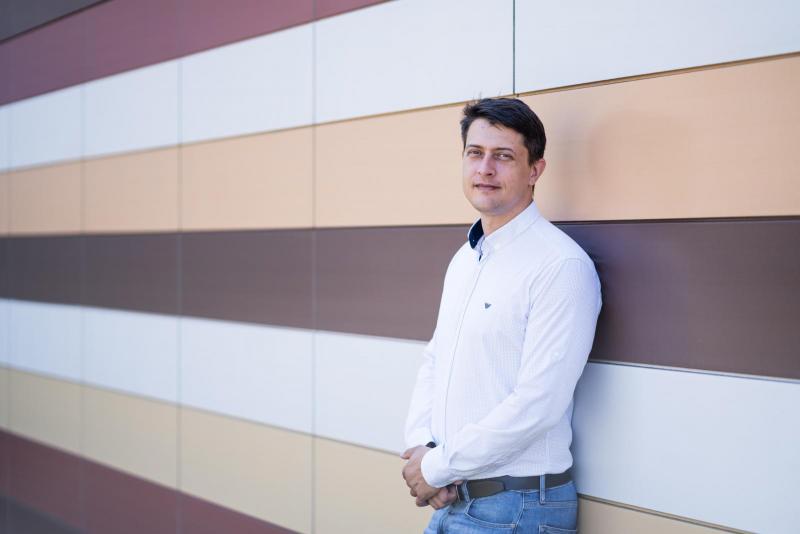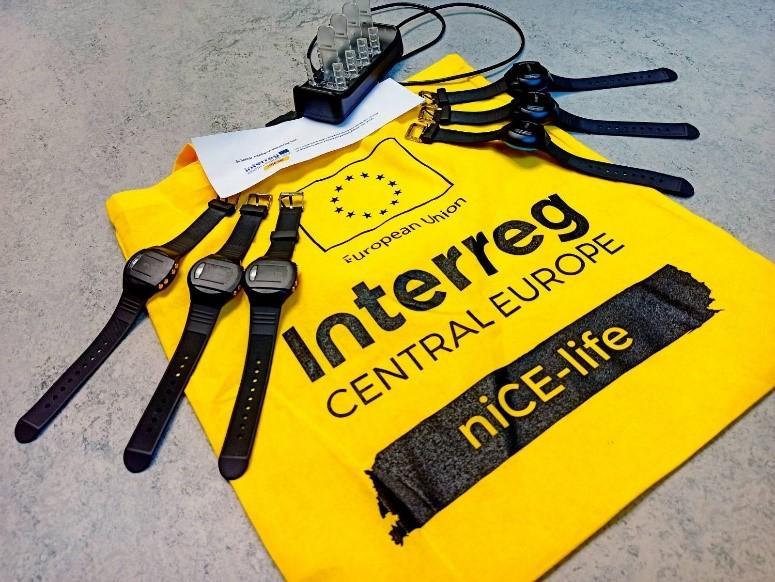Ideas and discoveries
Scientists from FEEC BUT have developed a bracelet that warns of the risk of Parkinson ’s disease

Parkinson's disease first shows symptoms up to 10 years before its visible manifestations. These include, in particular, sleep disturbances accompanied by restlessness. Now, a special bracelet, developed by scientists from FEEC (Faculty of Electrical Engineering and Communication) BUT (Brno University of Technology) thanks to the European project niCE-life, can detect them. The bracelet can be loaned to patients by GPs and care centres – because the earlier the symptoms of Parkinson's disease are detected, the quicker it is possible to administer medication to slow its progress.
The development of the bracelet is part of the European niCE-life project, which aims to develop strategies and digital tools to improve healthcare for seniors and promote their inclusion in society. It focuses primarily on old persons at risk of Alzheimer's or Parkinson's disease. The project responds to the challenges facing almost all European health systems: an ageing population and a higher incidence of neurodegenerative and chronic diseases.
The €2.1 million niCE-life project involves 10 European institutions from Poland, Slovenia, Italy and other countries. The Czech Republic is represented by the University Hospital Olomouc and the University of Technology, which received the second highest budget. Experts from FEEC BUT were tasked with developing a tool to help prevent the development of Parkinson's disease.
“Together with neurologists from St. Anne's University Hospital and CEITEC (Central European Institute of Technology) MU (Masaryk University) we investigated the first symptoms of Parkinson's disease. Progression is very slow – it can take up to 10 years before the disease fully manifests itself, for example, with the typical hand tremor. However, one of the very first symptoms is sleep disturbances – restlessness, turning, movement or frequent awakenings,” explains Radim Burget, head of the research project at the FEEC BUT.
Whether a person suffers from a sleep disorder is revealed by a one-night examination in a sleep laboratory. However, the examination is not pleasant and sleep laboratories have limited capacity. “It's a busy machine that you can't get into without a serious reason. In addition, few people go to the laboratory to lie down as a precautionary measure when they are not experiencing significant problems,” Burget explains what led him and his colleagues to design the sleep-monitoring device.

The device has already been tested by patients at St. Anne's University Hospital in Olomouc and in the Samariter Bund social facility in Austria. Compared to conventional smartwatches, the advantage of the bracelet is very accurate measurement and easy maintenance – you only need to charge it once a week. The bracelet has received medical certification and doctors from the neurological clinic of the Olomouc University Hospital have already started to use it for diagnosis.
“We also cooperate with GPs and nursing homes. A person is given a loaner bracelet to wear during the night for a week. It is then taken back to the doctor, who uploads the data into the system. Our artificial intelligence will try to detect potential risk factors in the curves. And if they assess that there's a discrepancy in the data, the patient is referred to a sleep laboratory for a more accurate examination,” Burget concludes.
Parkinson's disease manifests itself between the ages of 55–65 and cannot yet be cured. However, there are drugs that can slow the progress of the disease. The earlier it is caught in a patient, the better their chances of living a long and good life.
(mar)
Greater efficiency and completely new applications. Experts from FEEC BUT also collaborate on satellites for very low orbit
YSpace succeeds in prestigious ESA programme and heads to space
Scientists from FEEC BUT are participating in the development of a smart intersection. This could make transport more efficient and ensure greater safety
Swarm of unmanned drones with ground robots to help army survey hazardous areas
Miroslav Kasal: Experimental radio electronics is my life's credo